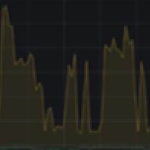3 things about your core network you should know
Is your core network really performing as you think it is?
Service provider network and infrastructure have become a critical foundation for all social and business operations. Still, it is not rare news that a service provider network is down and impacting a significant amount of consumer and business services until the problem is resolved and fixed. This may take anything from minutes to hours or in the worst case even days. Moreover, far too often the problem is first reported by customers. However, the network outage is not the only cause for service disruptions. Even though the network is ‘up’, it does not mean that services are working well and that customers are satisfied. Actually, the great majority of consumers or business users are experiencing short 10–20-minute performance degradations every day, which obviously weakens the user experience and customer satisfaction. In many cases the service providers do not have any visibility on these performance degradations.
Additionally, many new services set strict performance demands on the network and the rivalry of advanced 5G use cases, including industrial applications and mission-critical processes, does not make this any easier. In the present pandemic with massively increased home working, home schooling and critical access required to key medical services, the impact and potential disruption to businesses is heightened.
Network performance issues are very problematic especially in the high-capacity core networks, where bandwidth is from tens to hundreds of times higher compared to access and aggregation networks. The use of cloud services and bandwidth-hungry applications from distant locations has exploded causing increased need for core network capacity and there is no end to that in sight. Core network topology is typically a mesh, where each link carries even terabytes of traffic. Therefore, one problem even a small impairment, impacts a large number of services and customers. It is very evident that the service provider suffers from these events the most as the network operation is the core of their business. With wholesale and large business customers these issues do not only result to monetary losses but also to the loss of customers and to slowdown in new customer business due to bad reputation that propagates rapidly in the social media. Every outage is a trigger for losing customers and disturbing the reputation as a high quality business partner.
What’s wrong with current systems?
Performance monitoring is one of the basic functions the service providers must have in place. However, why are the quality issues mentioned above then not identified? Why do the operators not have the required visibility to their network? The main problem remains with the performance monitoring reliability and accuracy, which becomes more challenging with high capacities and performance critical applications, especially those enabled by 5G. When the collected information is too coarse, the visibility to the network is practically lost. Looking at an example from a live network below, the 15-minute average bandwidth utilization looks good as it is a nice curve where the maximum bandwidth peaks 675 Mbit/s.

However, the 10 second streaming data looks totally different: it peaks to 1.5Gbit several times.

If the network would be dimensioned only based on the 15 min average figures, it would definitely cause a traffic loss of critical business, control and signalling traffic. Thus, reliable, granular and microsecond accurate measurements are needed when wanting to assure high availability of the core networks.
What and how to measure?
Core network performance should be monitored and measured using KPIs that have a direct impact on the success of delivered services. These KPIs are latency, jitter, packet loss and sometimes also the available bandwidth. These are also the KPIs that can be used in the network and service availability calculations. In the IP core, the most feasible option to monitor the network is based on the active measurement technology, which scales cost-efficiently and enables full visibility to the network even without any live traffic. In active measurement, the actual services are simulated by injecting test traffic into the network. The performance of this traffic delivery can then be measured and monitored, which gives a great indication of the performance of any similar traffic transported between the measurement points. In order to detect the possible performance impairments in the core network, the packet generation in the active testing solution must be accurately timestamped, at a microsecond level, and sent with adequate, sometimes even at a millisecond frequency. This is the only way to truly detect issues, which are related to the bursty nature of the network traffic. These are also the issues which often remain hidden. When the service providers gain this accurate visibility to their network, they can truly react to issues early based on their severity before they become customer reported problems. Active testing can also be effectively used as a part of the troubleshooting process for locating and isolating these issues as well as validating the fix prior to closing the case. This way, the service provider can minimise the time spent on understanding the issue, its impact on services and the use of resources when taking corrective actions.
Creanord is dedicated to help service providers globally to measure and monitor their network performance. For core network monitoring the solution provides excellent toolset with which the service provider can stay on top of the network state. Creanord solution not only provides the needed accuracy and monitoring granularity, but also unmatched cost-efficiency and quick deployability. This was proven by one of the global Tier1 operators, who admitted having operated their network blind prior to deploying Creanord. Read more from the case study “Solution to guarantee performance in global Tier-1 service provider carriers’ carrier services”. For general information about the core network monitoring solution, please check out the solution brief “Solution for IP core monitoring”.
Read customer case solution to guarantee performance in global Tier-1 service provider carriers’ carrier services